Integrative analysis of transcriptome and metabolome reveals flavonoid biosynthesis regulation in Rhododendron pulchrum petals
- PMID: 35974307
- PMCID: PMC9380304
- DOI: 10.1186/s12870-022-03762-y
Integrative analysis of transcriptome and metabolome reveals flavonoid biosynthesis regulation in Rhododendron pulchrum petals
Abstract
Background: Color is the major ornamental feature of the Rhododendron genus, and it is related to the contents of flavonoid in petals. However, the regulatory mechanism of flavonoid biosynthesis in Rhododendron pulchrum remains unknown. The transcriptome and metabolome analysis of Rhododendron pulchrum with white, pink and purple color in this study aimed to reveal the mechanism of flavonoid biosynthesis and to provide insight for improving the petal color.
Results: Flavonoids and flavonols are the major components of flavonoid metabolites in R.pulchrum, such as laricitrin, apigenin, tricin, luteolin, isoorientin, isoscutellarein, diosmetin and their glycosides derivatives. With transcriptome and metabolome analysis, we found CHS, FLS, F3'H, F3'5'H, DFR, ANS, GT, FNS, IFR and FAOMT genes showed significantly differential expression in cultivar 'Zihe'. FNS and IFR were discovered to be associated with coloration in R.pulchrum for the first time. The FNS gene existed in the form of FNSI. The IFR gene and its related metabolites of medicarpin derivatives were highly expressed in purple petal. In cultivar 'Fenhe', up-regulation of F3'H and F3'5'H and down-regulation of 4CL, DFR, ANS, and GT were associated with pink coloration. With the transcription factor analysis, a subfamily of DREBs was found to be specifically enriched in pink petals. This suggested that the DREB family play an important role in pink coloration. In cultivars 'Baihe', flavonoid biosynthesis was inhibited by low expression of CHS, while pigment accumulation was inhibited by low expression of F3'5'H, DFR, and GT, which led to a white coloration.
Conclusions: By analyzing the transcriptome and metabolome of R.pulchrum, principal differential expression genes and metabolites of flavonoid biosynthesis pathway were identified. Many novel metabolites, genes, and transcription factors associated with coloration have been discovered. To reveal the mechanism of the coloration of different petals, a model of the flavonoid biosynthesis pathway of R.pulchrum was constructed. These results provide in depth information regarding the coloration of the petals and the flavonoid metabolism of R.pulcherum. The study of transcriptome and metabolome profiling gains insight for further genetic improvement in Rhododendron.
Keywords: Flavonoid biosynthesis; Metabolome; Rhododendron pulchrum; Transcriptome.
© 2022. The Author(s).
Conflict of interest statement
The authors declare that they have no competing interests.
Figures




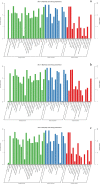
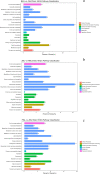
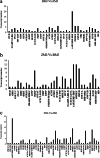
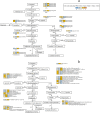


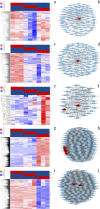

Similar articles
-
Integrated metabolomics and transcriptomics reveal molecular mechanisms of corolla coloration in Rhododendron dauricum L.Plant Physiol Biochem. 2024 Feb;207:108438. doi: 10.1016/j.plaphy.2024.108438. Epub 2024 Feb 15. Plant Physiol Biochem. 2024. PMID: 38367387
-
Metabolite profiling of violet, white and pink flowers revealing flavonoids composition patterns in Rhododendron pulchrum Sweet.J Biosci. 2021;46:3. J Biosci. 2021. PMID: 33576341
-
Integrated Analyses of Metabolome and RNA-seq Data Revealing Flower Color Variation in Ornamental Rhododendron simsii Planchon.Genes (Basel). 2024 Aug 7;15(8):1041. doi: 10.3390/genes15081041. Genes (Basel). 2024. PMID: 39202401 Free PMC article.
-
Flower colour and cytochromes P450.Philos Trans R Soc Lond B Biol Sci. 2013 Jan 6;368(1612):20120432. doi: 10.1098/rstb.2012.0432. Print 2013 Feb 19. Philos Trans R Soc Lond B Biol Sci. 2013. PMID: 23297355 Free PMC article. Review.
-
Production of anthocyanins in metabolically engineered microorganisms: Current status and perspectives.Synth Syst Biotechnol. 2017 Oct 31;2(4):259-266. doi: 10.1016/j.synbio.2017.10.005. eCollection 2017 Dec. Synth Syst Biotechnol. 2017. PMID: 29552650 Free PMC article. Review.
Cited by
-
Comparative transcriptomic and metabolomic analyses reveal differences in flavonoid biosynthesis between PCNA and PCA persimmon fruit.Front Plant Sci. 2023 Feb 27;14:1130047. doi: 10.3389/fpls.2023.1130047. eCollection 2023. Front Plant Sci. 2023. PMID: 36923131 Free PMC article.
-
Transcriptomic Analysis Reveals the Regulatory Mechanism of Color Diversity in Rhododendron pulchrum Sweet (Ericaceae).Plants (Basel). 2023 Jul 15;12(14):2656. doi: 10.3390/plants12142656. Plants (Basel). 2023. PMID: 37514270 Free PMC article.
-
Metabolite analysis reveals flavonoids accumulation during flower development in Rhododendron pulchrum sweet (Ericaceae).PeerJ. 2024 May 31;12:e17325. doi: 10.7717/peerj.17325. eCollection 2024. PeerJ. 2024. PMID: 38832044 Free PMC article.
-
Recent advancements in the physiological, genetic, and genomic research on Rhododendrons for trait improvement.3 Biotech. 2024 Jun;14(6):164. doi: 10.1007/s13205-024-04006-6. Epub 2024 May 26. 3 Biotech. 2024. PMID: 38808301 Free PMC article. Review.
-
Integration of Metabolomic and Transcriptomic Analyses Reveals the Molecular Mechanisms of Flower Color Formation in Prunus mume.Plants (Basel). 2024 Apr 11;13(8):1077. doi: 10.3390/plants13081077. Plants (Basel). 2024. PMID: 38674486 Free PMC article.
References
-
- Hang NTT, Miyajima I, Ureshino K, Masuda JI, Okubo H. Comparison of morphological characteristics of Rhododendron simsii. Planch distributed in Vietnam and Japan. J Faculty of Agriculture Kyushu Univ. 2010;55(2):233–237. doi: 10.5109/18835. - DOI
MeSH terms
Substances
Grants and funding
LinkOut - more resources
Full Text Sources
Miscellaneous

